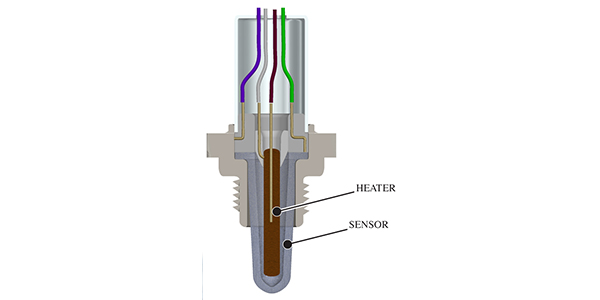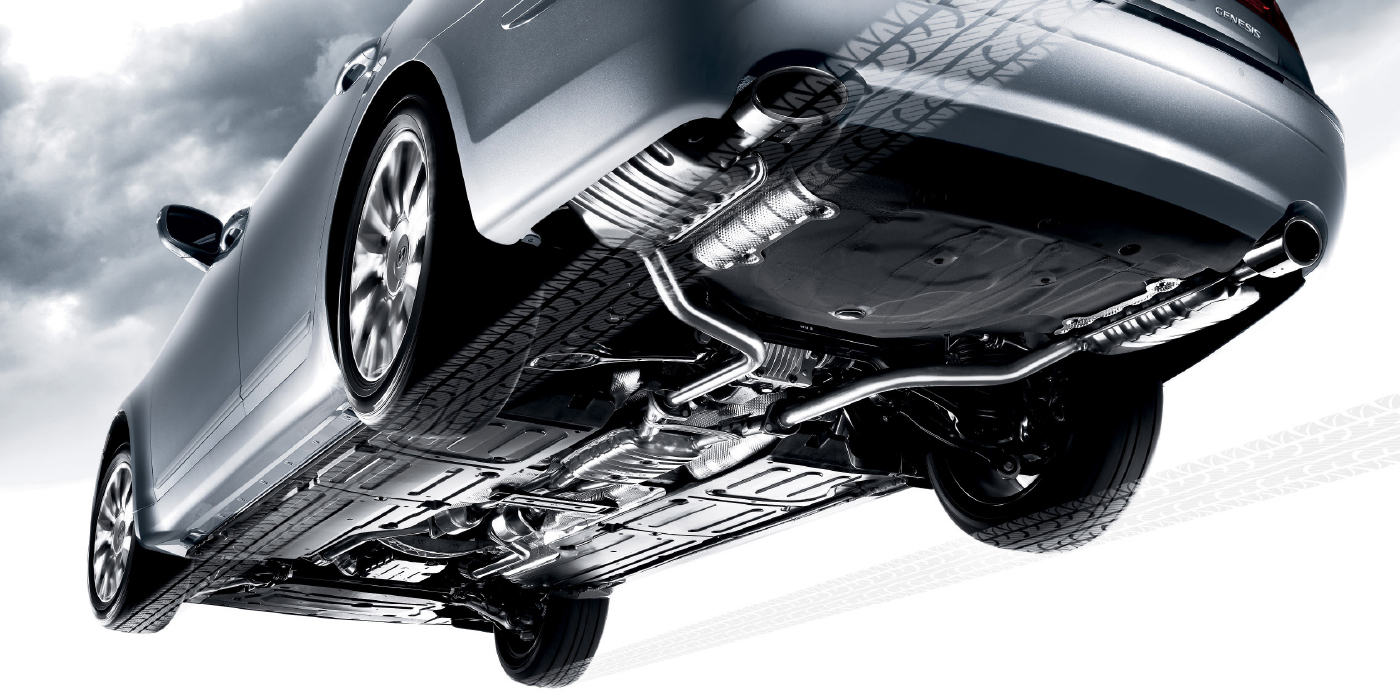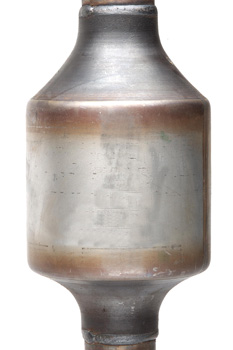 Lately, the theft rate has been rising in direct proportion to the price of platinum and palladium, both of which are precious metals more valuable than gold.
Lately, the theft rate has been rising in direct proportion to the price of platinum and palladium, both of which are precious metals more valuable than gold.
The consequences for the poor vehicle owner who has had his converter stolen far outweigh the scrap value of the cat that was snatched. A replacement converter can easily run several hundred dollars for an aftermarket unit, and from $500 to $800 or more for some OEM converters. There’s also the cost of replacing the pipes on either side of the converter that were sawed through to extract the cat. A new head pipe and intermediate pipe can add up to a couple hundred dollars more to the repair job. Add in the labor to install the new exhaust parts, and the total bill to the vehicle owner can approach $1,500 or more! That’s a mighty expensive price to pay because some lazy bum crawled under your customer’s vehicle and sawed off his converter.
Most of the thefts are done with a battery-powered reciprocating saw, and the most likely targets are SUVs and pickup trucks with plenty of ground clearance. Toyota 4runners are one of the more popular vehicles that are targeted by thieves because it has a relative large (and valuable) converter and plenty of ground clearance.
Cars, especially those with minimal ground clearance, are less-inviting targets of opportunity. A thief will usually pass up a car if there’s a SUV or truck parked nearby.
IT CAN HAPPEN ANYWHERE
Thefts can occur anywhere and any time of day or night. There have been numerous reports of vehicles having their cats snatched in broad daylight in driveways, mall parking lots, employee parking lots, and even in lots with video surveillance cameras, 8-foot chain link fences and security gates. Thieves can steal converters virtually anywhere because it only takes about two minutes with a sharp blade to cut through the pipes on both sides of the converter. The saw does make some noise, but that can be muffled by wrapping a towel around the pipe while it’s being cut.
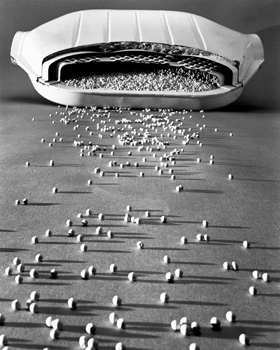 There have been a few instances where someone has caught a thief red-handed stealing their converter. There have also been a few instances of someone getting into their vehicle, starting it up and driving over the thief underneath (accidentally, of course!). In one routine traffic stop, the police discovered over a hundred sawed off converters in the back of a utility van. Apparently, the thief was on his way to the metal recycler to hock is stolen goods.
There have been a few instances where someone has caught a thief red-handed stealing their converter. There have also been a few instances of someone getting into their vehicle, starting it up and driving over the thief underneath (accidentally, of course!). In one routine traffic stop, the police discovered over a hundred sawed off converters in the back of a utility van. Apparently, the thief was on his way to the metal recycler to hock is stolen goods.
Local and state governments are attempting to deal with the issue by enacting new laws that require metal recyclers and scrap dealers to obtain identification from anyone selling catalytic converters, and to store the converters for a specified period of time (15 to 30 days) in case they turn out to be stolen. That will deter thieves from selling their stolen wares to honest metal recyclers. But it won’t make any difference to shady scrap operators who thumb their noses at the law and care less about who’s selling them a pile of converters or where or how they got the converters.
Another technique that’s being tried in some areas is to engrave the vehicle’s VIN number on the converter shell. This creates a positive means of identification that can be used to identify a converter and match it to a vehicle. Of course, if the number is engraved onto the heat shield, all the thief has to do is cut off the exterior shield to get rid of the evidence. Or, the thief might just grind off the engraved number to hide it or make it impossible to read.
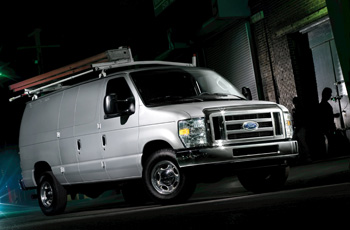 THEFT PREVENTION
THEFT PREVENTION
The problem has also spawned some innovative approaches to theft prevention. Anything that makes it harder for a thief to saw off a converter can help deter theft and thwart a would-be cat snatcher.
JAM-CJ Innovative Products (www.catclamp.com) sells a converter theft deterrence device called the “CatClamp” that surrounds the converter and attaches the converter to the vehicle’s frame. The CatClamp uses steel collars that clamp around the pipes on either side of the converter. The collars hold four aircraft quality hardened steel cables that are very resistant to sawing. There are three models to choose from, ranging in price from $120 to $270, and the manufacturer backs the product with a $1,000 repair guarantee should a converter ever be stolen after their device has been installed.
Another product called “CatCuff” is also available that wraps a bundle of cables around the converter to deter theft. The product is available though various sources on the internet and sells for $59. But the cables are ordinary steel and can be sawed through.
Another approach is to scare off a would-be thief before he can do any damage. This can be done by mounting a proximity motion sensor under the vehicle. On such product is the “Prearmor Sensor” (www.gastheftproducts.com) is available for $189, and can be wired into an existing alarm system. The motion sensor will not only deter anyone from stealing the converter, but also anyone who might be tempted to cut a fuel line or punch a hole in a gas tank to steal fuel.
The only drawback with a motion sensor is that small critters scurrying under the vehicle can set off a false alarm.
Installing a skid plate under a 4×4 truck or Jeep is another step that can deter converter thieves. These flat steel plates attach to the underside of the vehicle to protect the drivetrain and exhaust system from the hazards of off-road driving. They create an effective barrier that prevents access to the converter. But they can be unbolted (unless you weld one or two of the bolt heads to the plate).
The best theft prevention methods are to park a vehicle inside a locked garage, or inside a fenced-off area with an ill-tempered Rottweiler on patrol.
CONVERTER REPLACEMENT RULES
If a customer has been victimized by a converter thief, there’s no guarantee the thief won’t strike again. Recommending one of the above converter theft prevention devices can save your customer the cost and hassle of having his converter replaced again.
Some customers might ask why you can’t just install a piece of straight pipe in place of the missing converter. That would certainly fix their problem at minimal cost, and deter any future thefts (a thief can’t steal a converter that isn’t there, right?). But the EPA says that kind of repair is “emissions tampering,” and does not allow such repairs on any street-driven vehicle. Emission violations can result in hefty fines.
Maybe the EPA should start fining converter thieves for removing emission control devices. But that’s not likely to happen. It’s easier to fine you. So keep yourself out of hot water with the EPA by replacing a stolen converter with a new one.
What about installing a used converter from a salvage yard? On many applications, a used converter is far less expensive than a new OEM converter or an aftermarket converter. But a used converter with a lot of miles on it may or may not have much life left in it. What’s more, used converters have no warranty whatsoever. The salvage yard might say they’ll give you another if the first one doesn’t work. But why bother?
If the customer’s vehicle is fairly new, installing an old, possibly worn-out converter makes no sense even if it is much cheaper than a new converter. The efficiency of the catalyst may be so low that it will set a code shortly after it is installed — forcing your customer to pay for a second replacement.
Federal law (and state law where applicable) prohibits ANYONE from replacing a converter with a straight pipe on any street-driven vehicle that came factory-equipped with a converter. So-called “test pipes” have been outlawed, though you can still find people peddling them on the internet. A do-it-yourselfer might get away with such a repair.
However, a straight pipe will not allow a vehicle to pass a plug-in OBD II emissions test, a tailpipe emissions test or a visual inspection (if required). The OBD II cat monitor will detect the missing converter almost immediately and set a fault code. We’ve seen devices on the internet that claim they can “fool” the OBD II system if the converter has been removed. But such devices are still considered tampering by the EPA, and are illegal.
When a repair shop replaces a converter, you must:
• Certify in writing why you are replacing the converter (because it was stolen). In addition, the repair invoice must include the customer’s name, complete address, and the make, model, year and mileage of the vehicle. This paperwork must be retained for six months.
Converters are covered by an 8-year, 80,000 mile federal emissions warranty, but the warranty does not cover theft.
• Get the customer’s written authorization to replace the converter, and keep a copy of this signed statement for six months.
• Install only an EPA “approved” converter (check for the required ID tag) that is the same type (two-way, three-way or three-way plug oxygen) as the original. For 1995 and newer vehicles, the aftermarket converter must be OBD II approved.
• Install the new converter in the same location as the original.
• Connect the new converter to the existing air pump or air injection plumbing (if used).
• Inspect the downstream oxygen sensor, and replace as needed if the sensor has been damaged or is missing. A bad sensor will set a catalyst efficiency code.
• Give the customer a warranty card for the replacement converter (which comes with it) that has the same information written on it as the repair invoice. Aftermarket converters carry a minimum performance warranty of 2 years/25,000 miles and a workmanship defect warranty of 5 years/50,000 miles.
CLEVER CAGE STOPS CAT THEFTS
It’s an effective deterrent that makes would-be thieves think twice, says inventor Jim Dusa II, who is the owner of a welding and fabrication business in Toledo, OH. His “CatClamp” device is a stainless steel cable cage that fits around the catalytic converter. It’s easy to install, and sells for only $120 to $270 depending on the model. Dusa says the price of his catalytic converter lock is far less than what it typically costs to repair the damage after a converter has been stolen. Repair costs can be as high as $1,000 or more!
“I came up with the idea about three years ago. A large fleet customer in the area was experiencing a high rate of converter thefts. They were losing six to eight converters a day,” said Dusa.
The CatClamp uses aircraft quality stainless steel cables that are extremely difficult to cut through with a reciprocating saw, a converter thief’s tool of choice. When a would-be thief sees the cage around the converter, it looks like too much work so they leave it alone and look elsewhere for easier pickings; if they attempt to cut the CatClamp, it will destroy the saw blade in seconds.
Dusa said he’s sold thousands of CatClamps since the product was introduced. “About 70% of my customers are do-it-yourselfers who buy the product and install it on their own vehicle. Many of these people have had a converter stolen and want to prevent it from happening again. The other 30% of sales have been to repair shops that install the CatClamp on their customers’ vehicles.”
Dusa says his top-of-the-line model comes with a guarantee that will reimburse a customer up to $1,000 if someone successfully steals the converter off their vehicle. “So far, I haven’t had to pay a single claim, though there have been a few attempted thefts. But in every case, the CatClamp thwarted the theft.”
More information about the CatClamp can be found at www.catclamp.com.

